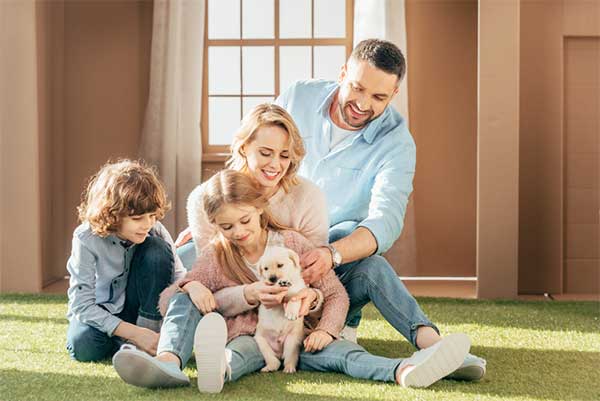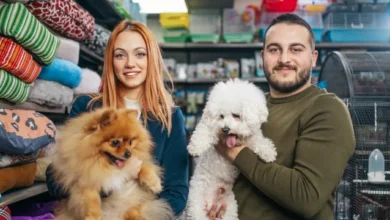
So it’s nearly time to take home your new furry friend, and you couldn’t be more excited! Of course, bringing home a new puppy can also come with a lot of challenges. There are so many different things to think about when it comes to helping your puppy to adjust to your new home, such as when do you take their dog crate out of the bedroom and how do you create a welcoming environment that they will feel comfortable with?

It can seem a bit overwhelming to try and figure out how to give your pooch the best possible home, but we’re here to help. Here are some ways that you can help your little pup to adjust to their new home.
Read More:
- Bringing Home a New Puppy: Preparing Tips and First Steps
- How to Prepare to Bring Your New Dog Home!
- An Expert Guide to Buying Your First Dog Crate
- 10 Simple Things You Can Do To Keep Your Dog Happy and Healthy For Life
- House Training a Puppy | Potty Train a Puppy the Easiest Way
1. Get The Potty Spot In Place
One of the biggest challenges with puppies is potty training. Dogs aren’t born with an innate knowledge of where to ‘go,’ so you have to give them some guidance. Many people will use newspaper or training pads indoors to guide their puppy towards. Others will use a crate for potty training, whereas some will take their dogs straight outside to go potty. It’s up to you, but just have patience – it can take a while to get this particular habit in place.
2. One Room At A Time
While you may be used to your home, your puppy isn’t. That’s why it’s important to gradually introduce them to different parts of the house. Don’t let them just roam the house willy nilly early on – it can be too much for them to handle. Let them explore one specific area at a time. This could be a location where they will be having their food and water or where they are going to sleep. Whatever the case, make sure that the location is puppy-proofed. They shouldn’t be left in areas that are full of potential hazards. When you think that the dog is used to one area, you can then introduce them to new locations in the house. Don’t introduce them to rooms that they aren’t allowed into, of course.
3. Introduce the Crate
If you are planning on crate training your dog – a good idea, so definitely recommended – then you will need to ensure that they are introduced to their crate pretty early on. Make sure that you put the crate in a neutral area where there is a lot going on – puppies are pretty sociable, so they don’t like to be left alone. An area like a lounge may be a good choice for their crate, but it will also give them somewhere to call their own. You can make it feel more welcoming by putting a ticking clock in the crate that’s covered in a towel, as this replicates the sound of their mother’s heart. Feeding them in the crate will also help them to adjust.
4. Right on Schedule
When it comes to puppies, routine is important. Give them something predictable. This means giving them food at around the same time every day and then taking them out right after they’ve eaten, as this is a time when they will likely need to go. Also, take them out before it’s time for bed and after playing with them. Give them some time to sleep, too, since they are still very little.
5. Supervision
Puppies are adorable, so it’s hard to take your eyes off them anyway. Either way, you need to ensure that they are constantly being supervised, so they don’t get into too much trouble. You don’t want your dog suddenly chewing on the cables or peeing in a random corner of your house, after all. You will be able to give them more freedom later on, but right now, it’s better to be cautious.
6. Have Some Rules
Your puppy will try to push your buttons, which is why it’s so important to ensure that you have rules and boundaries early on. They need to understand that there’s a proper way to behave. Ultimately, they will also be happier if there are rules in place because they will keep them safe. Remember, if you are training your dog, it’s always best to use positive reinforcement and redirection. Don’t yell at them or hurt them as it isn’t going to help and will just scare them instead.
Conclusion
So now you’re all set for getting your pup used to their new home! Remember, be patient – it may take some time, after all.



